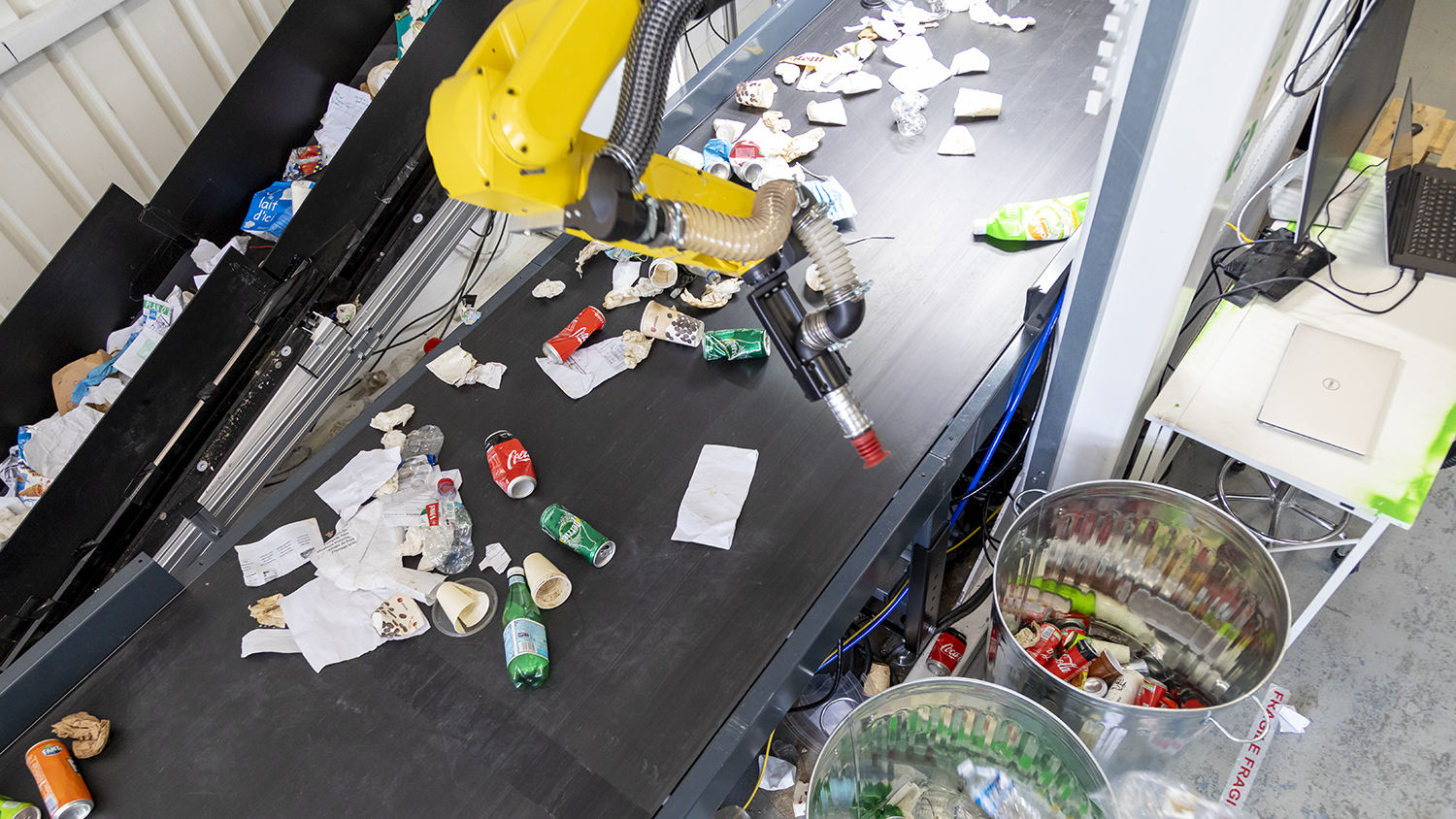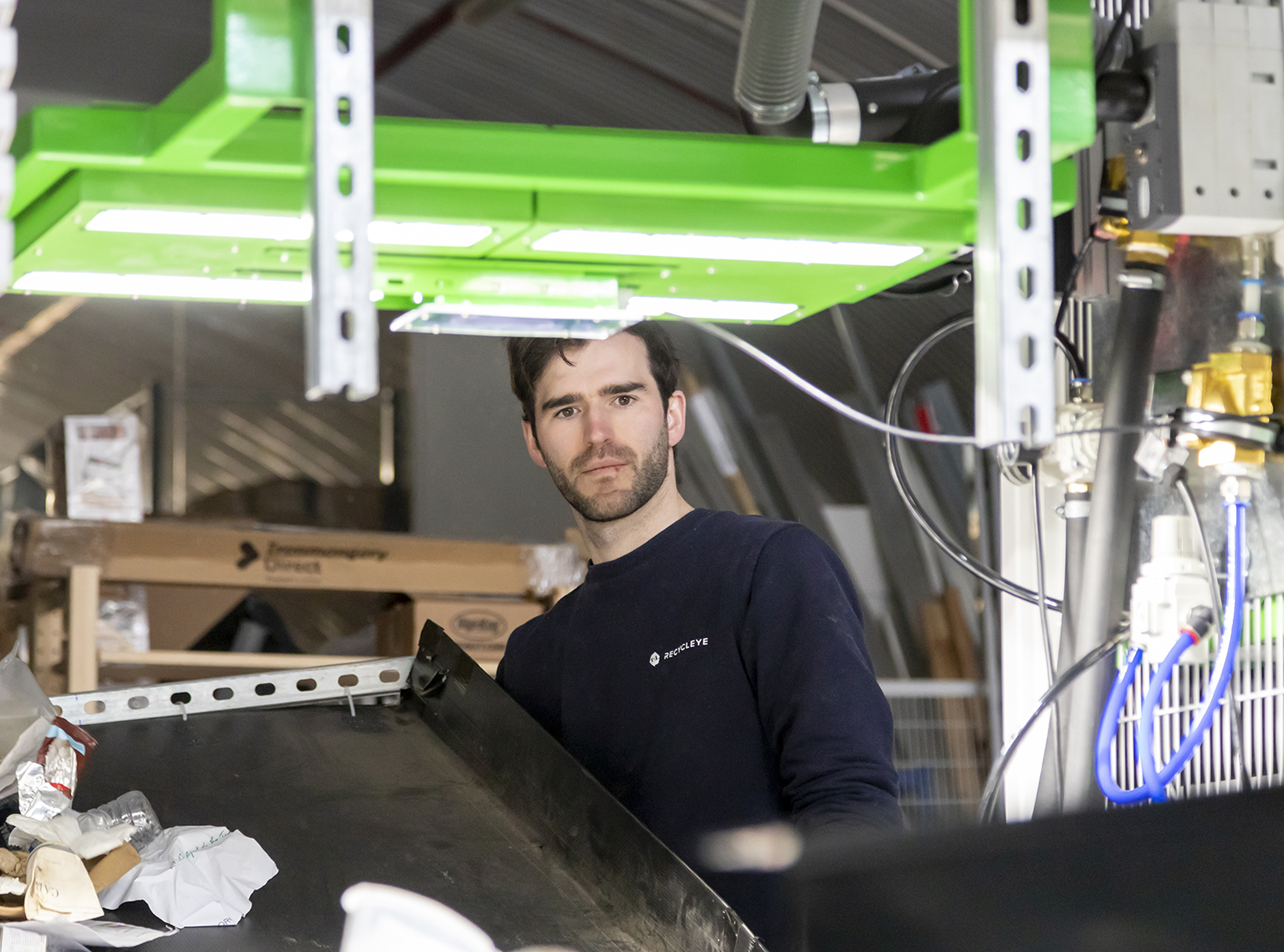
A system using AI and robotics to automate and improve the economic benefits of recycling could be available for use within construction in 12 months.
Recycleye pairs an AI recognition system with a robotic sorting arm to replace human pickers on material recycling facility (MRF) lines. The start-up company, founded in 2019, by two Imperial College London graduates, is a finalist in a new Young Inventors prize awarded by the European Patent Office (EPO).
The co-founders initially developed their Recycleye system in a home garage, with a treadmill covered in rubbish, before working in partnership with robotics firm Fanuc.
Currently the robot and AI system has been taken up by four MRFs in the UK and Europe. However, co-founder Peter Hedley said the company has already had lots of interest from the construction industry.
Hedley, a civil engineer, said working within this sector “adds loads of cool challenges” such as the need to develop a more complicated picker. Currently a sucker is used by the Recycleye robot that aims at the centre objects, like a plastic bottle or piece of card, to pick them up.

Working with heavier, construction waste would require developing a picker that acted “more like a hand” said Hedley, and would require paddles to enclose around the object. A much larger robot within the Fanuc series would also be required.
Hedley said the AI visual recognition part of the programme could be applied to construction waste now, but the company is between 12 and 24 months away from developing the whole Recycleye system specifically for the sector. This is due to needing to develop the technology specifically for construction, but also to ensure that the young company is ready to scale up without “spreading itself too thinly and losing quality”.
“I am sure there are lots of problems [to be solved] in C&D waste that we don’t see, so if we go into that sector too soon we will be trying to solve those problems, at the same time as those in municipal waste,” said Hedley.
“I am sure there are lots of problems [to be solved] in C&D waste that we don’t see, so if we go into that sector too soon we will be trying to solve those problems, at the same time as those in municipal waste.”
Recycling within the sector is ripe for change, and Recycleye could make a big impact, as construction demolition and excavation waste comprises 62% of all UK waste, according to the latest figures from the Department for Environment, Food and Rural Affairs (Defra). Hedley argued it was important to get “engineers and talented people” to look at this problem of our waste, and how to recycle it into new products “to improve our consumption as a society”, for the sake of our environment.
Recycleye uses a mobile phone-quality camera mounted above a waste conveyor belt, which takes photos of the passing waste – 60 photos per second. This information is sent to an algorithm that ranks the items for picking priority, and then sends instructions to the robotic arm, telling it what item to pick and where it is, and where to place it. The system makes 55 picks every minute.
The Recycleye visual recognition system has an advantage over competitors and existing technology in that it can run on faster belts, and because the AI can prioritise picking the most valuable materials the company reports a 300% performance increase. The system also has advantages over human pickers in that it cannot get tired and can be run 24/7.
Don’t miss out on BIM and digital construction news: sign up to receive the BIMplus newsletter.













